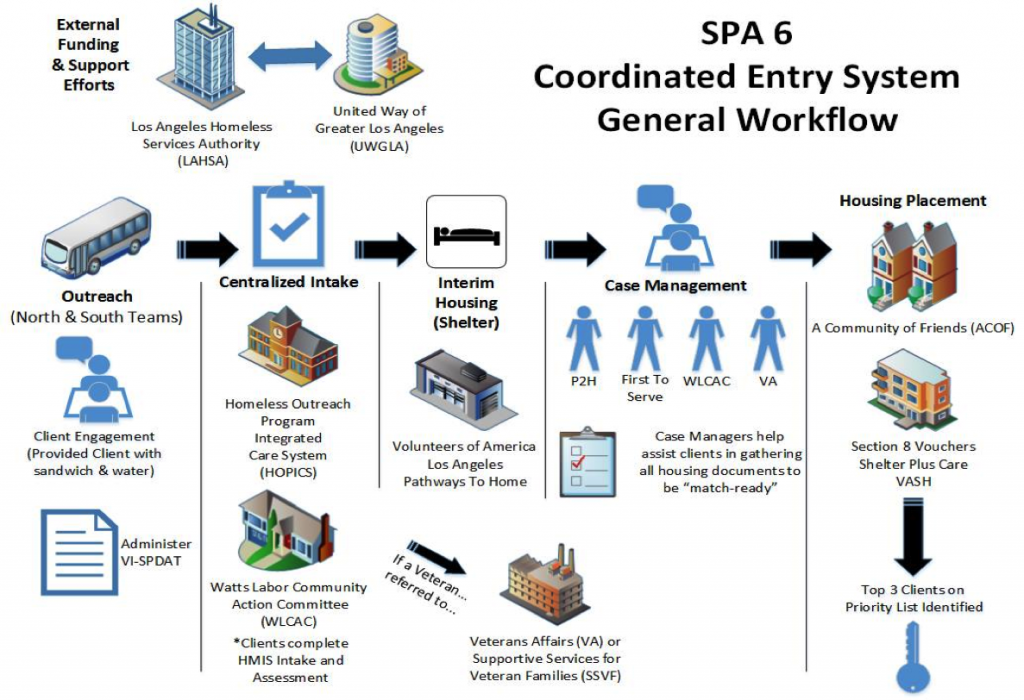Hello AEA365ers! We are Suzanne Markoe Hayes (Director) and Elaine Donato (Internal Evaluator) from the Evaluation and Research Department at Volunteers of America Greater Los Angeles (VOALA), a large non-profit organization whose mission is to enrich the lives of those in need.
One program we support is VOALA’s largest emergency shelter located in South Los Angeles— an area known for having the densest homeless population in Los Angeles County. As an initiative led by United Way Greater Los Angeles to end chronic homelessness by 2016, VOALA’s shelter joined homeless service providers in South L.A. to design and implement a Coordinated Entry System (CES). To develop such a system, participating service providers were required to join forces for the very first time. The collaborative was going to be a challenge due to the extensive history of homeless service providers in South L.A. having scarce resources and competing for the same scraps of funding.
Human service organizations are being asked to collaborate strategically to address social issues, and they must do so with their existing limited resources. For majority, this includes having no funding for a third-party evaluator and/or support from an internal evaluation department. Recognizing these limitations, VOALA contributed their Internal Evaluation team to assist with the collective impact of the South L.A. CES collaborative. We implemented a process evaluation to help identify the overarching collaborative goals, the processes that will occur, and to define each organization’s role. As a result, the South L.A. CES team successfully designed a unique system to link chronically homeless individuals in their community with the most appropriate services and housing.
Here are hot tips to implement a collaborative process evaluation:
Hot Tip #1: Make clear to all participating organizations that the evaluator is here to assist all agencies, not just own agency.
Hot Tip #2: Create process maps to help identify each organization’s role in the process. As a key element for continuous quality improvement (CQI), process maps can also be useful in tracking the activities related to achieving desired outcomes.
Hot Tip #3: Create a safe, open environment where team members are allowed to share their innovative ideas on how to better serve the target population and strengthen existing processes.
Hot Tip #4: Produce dashboard reports and share in biweekly meetings to inform decision-making and track team goals and desired outcomes.
Rad Resource: Check out the Center for Urban Community Services for their training CQI methods including process maps.
The American Evaluation Association is celebrating Internal Evaluation (IE) Topical Interest Group Week. The contributions all this week to aea365 come from our IE TIG members. Do you have questions, concerns, kudos, or content to extend this aea365 contribution? Please add them in the comments section for this post on the aea365 webpage so that we may enrich our community of practice. Would you like to submit an aea365 Tip? Please send a note of interest to aea365@eval.org. aea365 is sponsored by the American Evaluation Association and provides a Tip-a-Day by and for evaluators.

